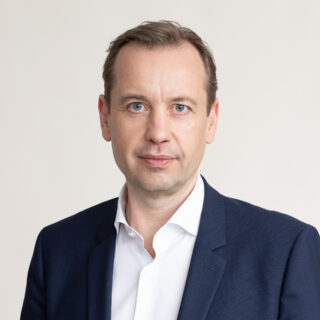PatoGen’s technology helps aquaculture become more sustainable
PatoGen used Nopef funding to explore expansion into Chile’s aquaculture sector. Their diagnostic technology helps fish farmers detect and manage disease, reducing the need for antibiotics and chemicals. Following a successful feasibility study, PatoGen established a local office and began serving Chilean clients, aiming to improve fish health, boost sustainability, and lower environmental impact in one of the world’s largest salmon-producing countries.
Patogen
Norway
Chile
Agriculture, forestry and fishery
Seafood is an integral part of cuisines the world over. On average, a person eats about 20 kilos of fish annually, half of which is from aquaculture. The Norwegian firm PatoGen has focused on improving aquaculture to boost industry profits, protect animal welfare and benefit the environment. PatoGen applied for funding from the Nordic Project Fund (Nopef) to implement their proven solutions in Chile.
“I’ve actually worked with Nopef to establish projects in the U.S. and Chile during my previous job at Cryogenetics AS,” says Jørn Ulheim, CEO, PatoGen. “Here at PatoGen we had a goal to take European technology to Chile so I decided to approach Nopef again for funding the feasibility study.”
Aquaculture, sometimes known as fish farming, is increasingly important for the world’s seafood supply. Many wild fisheries have been overexploited, but aquaculture can contribute to sustainable supplies of domesticated fish. Fish farms can also be more productive than wild stocks and bring economic benefits, especially in rural areas.
“One challenge with aquaculture is the high concentration of fish in a small area,” Ulheim continues. “Viruses, bacteria or parasites such as sea lice can spread quickly through such a population.”
Tech to understand fish populations
PatoGen provides information to prevent disease and parasitic outbreaks and information on how to properly combat any outbreaks which do occur. They use platforms such as real-time polymerase chain reaction (PCR), sequencing or histopathological methods. Some products are proprietary.
“When fish die of unknown causes the fish farmer sends us biological samples which are analysed in our laboratories,” Ulheim explains. “PatoGen’s state-of-the-art laboratories analyse thousands of samples daily. We can determine the health of a population and if any new pathogens are developing so we can consult with our clients.”
The overuse of chemicals and antibiotics has long been happening in animal husbandry on land, and the same thing is happening in some aquaculture productions.
“PatoGen helps to limit the use of these products or to apply them in a more correct volume,” says Ulheim. “With our solutions fish farmers only give the right treatment at the right time, so we contribute to reducing the overuse of chemicals, making aquaculture more environmentally friendly.”
Benefiting Chilean aquaculture
If you’ve eaten farmed fish from Norway there is a good chance that you have already benefited from PatoGen’s technology. Yet aquaculture is developing around the world, so in 2016 PatoGen approached Nopef to study an expansion to Chile’s large and advanced aquaculture industry.
“We have now established a company in Chile and employ two people in Puerto Varas,” Ulheim says. “Three Chilean customers are now using our technology. Our long-term goal is to have improved capacity on the ground. We will either open our own laboratory or partner with a local lab partner to better cater to local needs.”
PatoGen’s experience in Europe would serve the Chilean aquaculture industry well, particularly with their big salmon and trout farms.
Reducing the use of medicines and chemicals
“We aim to help reduce the environmental footprint in Chile like what the industry has accomplished in Norway,” says Ulheim. “Chile has a major trade in Atlantic salmon, which is an international commodity. Consumers help to drive these changes because they demand sustainability and increased documentation of the food on their plates. Our tools are necessary for them to take these steps towards sustainability.”
Norwegian fish farmers have treated the parasite sea lice with hydrogen peroxide and other chemical treatments, but now the sea lice are acquiring resistance to the treatments. PatoGen’s solutions could help stop this from also happening in Chile. Additionally, while antibiotic use is rare in Norway’s fish farms, it is rising in Chile. PatoGen’s goal is to help Chile reduce the use of hydrogen peroxide by 1,500 metric tonnes and reduce antibiotic use of 278 metric tonnes annually during the project.
“Nopef is an excellent tool because often funding is hard to get. Some institutions have applications which are so complex you have to hire an expert to write them,” Ulheim says. “Working with Nopef is straightforward and there is good follow-up. I’ve worked with them three times so far in my career and I have only had good experiences with them.”
Photos: PatoGen Analyse AS
